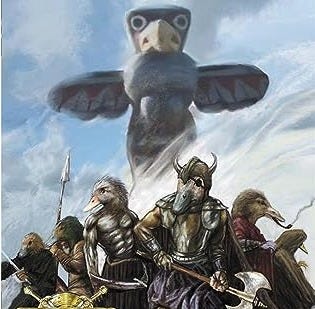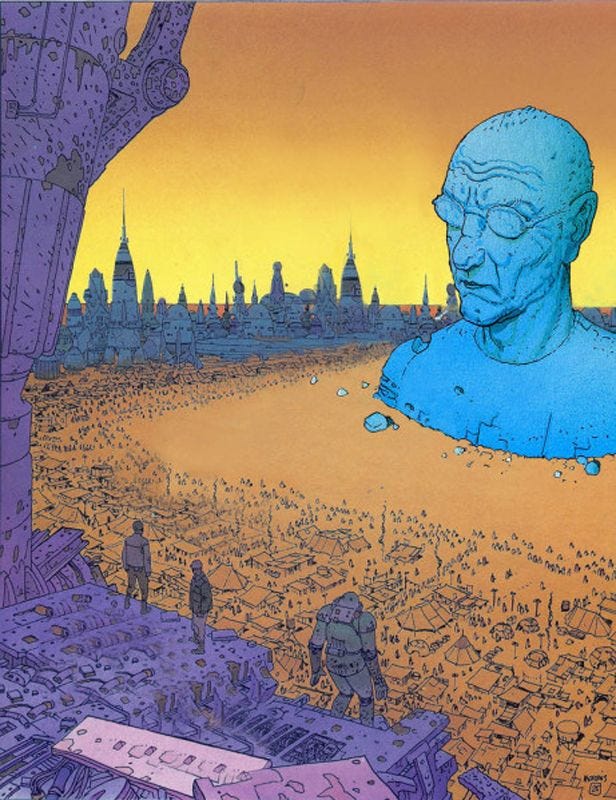I have been quite fortunate in that since moving my CANTOS OF THE LAUGHTER GODS game online, I have managed to get quite a number of sessions in the past 3 weeks. Four late night sessions squeezed in as the game continues to evolve.
Last session my players opened a portal to the Demi-Plane of Ducks which proved to be quite a hilarious and yet traumatic event for the table. More on that in an upcoming post. Its amazing how a short, single hex entry can fuel multiple sessions worth of emergent gaming. My games have no stories, plots, nor anything that need be done. My players are certainly not saving the world. All of the shenanigans from last session began with this simple Hex Entry, and then things snowballed from there.
HEX ENTRY
A 6' tall duck-man (Armor: as leather + shield, HD 7, Move 150' [walk and fly], 1d8/beak) is immune to lightning. Once per combat it can generate 1d4+1 mirror images of itself. Once per turn it can generate a wall of feathers up to 20' away in any configuration that is no more than 35 square feet. Anything coming into contact with the feathers will be enveloped and lifted skywards and then dropped for 7d4 points of damage (save for half ).
Strangest of all, this duck-man is actually a gate to the Demiplane of Ducks. Killing the being will open the gate. Oh yeah, these heavily muscled Malards have a penchant for flesh and combat and are responsible for the extinction of entire races.
People have asked me how I go about designing my hexcrawls and if I’m being totally honest I create 2 brief hexes per day on my breaks at work. They are very brief entries as per the above example of the Duck. I create 1 Major Hex & 1 Minor Hex. By the end of the week and just in time for my next session I have a d20 table of Hexes, with ten Major and ten minor things they party may discover. As they move into a new Hex I roll a d20 and voilà! I know there are a lot of articles out there on how to create a hexcrawl but this has been working really well for the table and I love not knowing what the party will happen upon next. Its fun for me.
A major Hex may contain a temple guarded by some sinister evil that has in its possession a rare artifact, or a a major hex will effect the environment of the setting somehow, leaving it scarred or changed for better or worse.
A minor Hex could be something as simple as a dozen obsidian statues of exquisite craftmanship. There are damaged holes where their eyes must once have held rare jewels. Anybody who inspects one will hear the subtle sound of laughter and dream about the statues for the next 1d6 nights.





